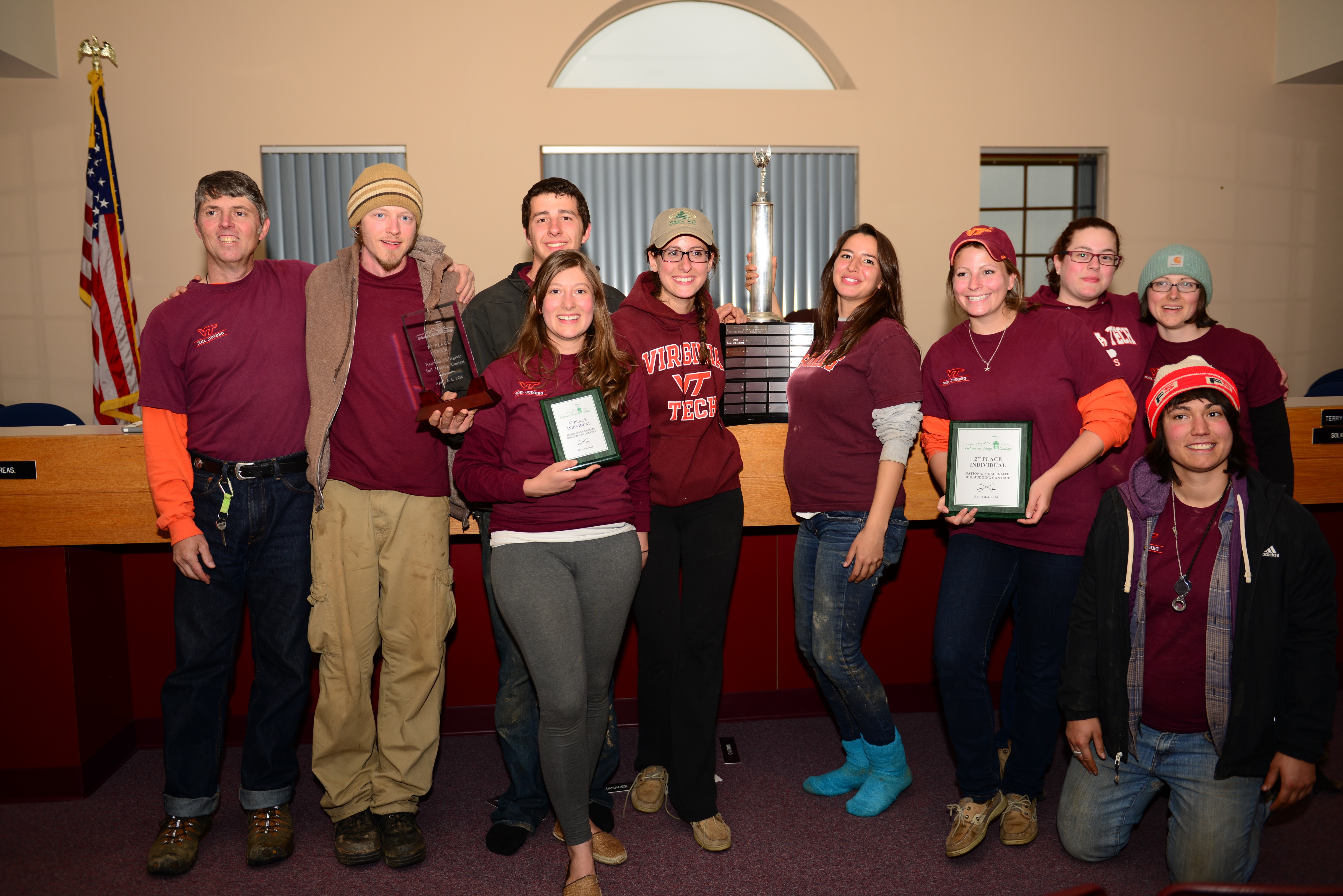After national win, members of Virginia Tech Soil Judging Team head to competition in South Korea

The Virginia Tech Soil Judging Team recently won its fifth national championship and now two members of the team will represent the U.S. at an upcoming international competition.
The team claimed top honors at the Soil Science Society of America National Intercollegiate Soil Judging Contest for the third time in five years. For the first time ever, the top students from the U.S. are headed to the 20th International Union of Soil Sciences World Congress of Soil Science’s first International Soil Judging Contest in Jeju, South Korea in June.
Individually, Julia Gillespie of Ashburn, Va., a senior majoring in environmental science, finished in the top four, which earned her a spot on the first-tier team representing the U.S. at the international soil contest. Emily Salkind of Springfield, Va., a senior majoring in environmental science, took home ninth place and earned a spot to go to South Korea. She will be competing for the U.S. as a member of the second team. Virginia Tech is the only school that has more than one student who qualified to represent its home institution.
As winning coach at the national competition, Associate Professor of Crop and Soil Environmental Sciences John Galbraith, was honored with the opportunity to coach the first-tier team in Korea. He is also an officer of the International Union of Soil Scientists.
“I do believe this is the most difficult intercollegiate contest to win because it requires both physical and mental skills as well as interpretation of soils and landscapes in the field in an unknown setting,” said Galbraith. “Our sustained success tells the students that they are getting a quality education, that they are highly skilled and competent, that hard work pays off, and that their experiential education compares favorably with any of the universities in the country.”
The students spent hours in practice pits over a four-day period when they slogged sampling equipment through forests and fields to perform a number of tests for the competition. The students had to measure soil color and shape; separate soil profiles into horizons and name them; estimate the texture, rock fragments, structure, and record color patterns that indicate water table height; record landscape properties; and classify each soil. Students’ answers were compared to the soil descriptions of a team of experts.
Students on the team also included
- Ruth Anderson from Richmond, Va., a senior majoring in crop and soil environmental sciences;
- Emily Baer from Woodbridge, Va., a junior majoring in crop and soil environmental sciences;
- Nick Hebel from Winchester, Va., a junior majoring in environmental science;
- Brian Nester from Radford, Va., a senior majoring in environmental science;
- Stephanie O’Neil, from Leesburg, Va., a senior majoring in environmental science;
- Natasha Nahas from Clifton, Va., a junior majoring in environmental science; and
- Miranda Livas from Severna Park, Md., a recent crop and soil environmental sciences graduate.






